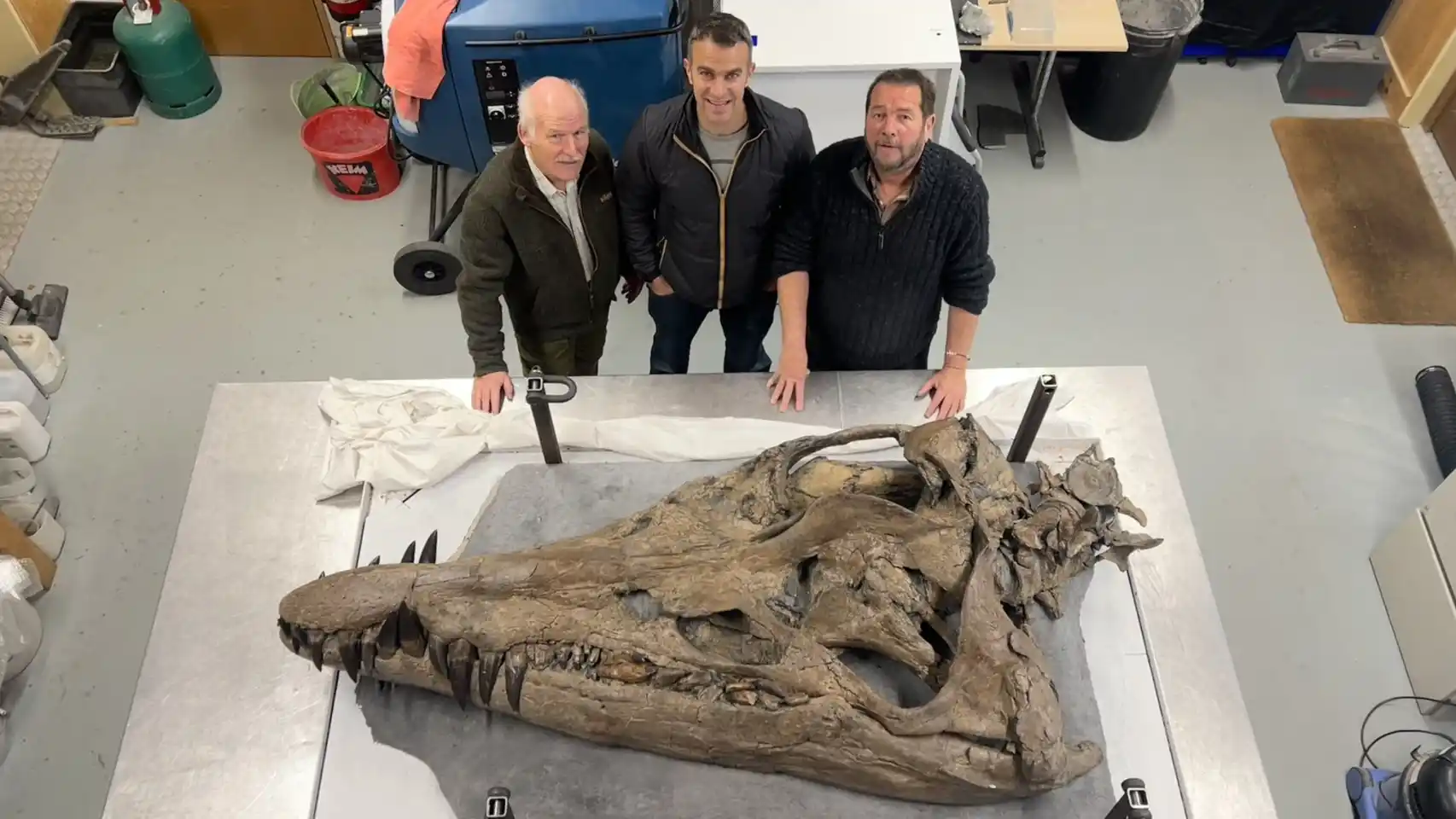The skull of a pliosaur, a huge marine predator of the Jurassic period, is on display for the first time starting this week in the Etches collection at the Museum of Jurassic Marine Life in the English town of Kimmeridge, in England.
The skull, which is up to two meters long, is “the best-preserved remains ever found in Europe” of this ancient predator, according to the collection’s director, Steve Etches, in a statement to EFE.
A discovery that, he predicts, will not be the only one, because although currently only the skull of this marine reptile has been extracted in the county of Dorset (southwest of England), “the rest of the body is there, ” on the hill where the bones that are now exhibited in the collection were obtained .
“If we manage to get the complete body, we will have to build an expansion of the museum to accommodate the animal in its entirety,” said Etches, referring to the size of the predator which could reach more than 10 meters. long.
As Etches explained to EFE, pliosaurs lived in the planet’s oceans from the early Jurassic stages (about 200 million years ago) to the middle of the Cretaceous Period (about 100 million years ago).
In their habitat, pliosaurs were the largest animals and preyed on all types of reptiles, including members of their own species, as evidenced by pliosaur tooth marks – which are very distinctive because of their triangular shape – on other skeletal remains.
According to the museum director, this species has been determined to be the largest carnivorous reptile “ever.”
Today, it can be compared to a saltwater crocodile, one of the animals with characteristics most similar to the ‘tyrannosaurus rex’ in the ocean.
The Etches Collection brings together a range of marine-derived fossils and bone remains, including the world’s first ammonite egg, in the most comprehensive collection of its kind in the UK.
Also read: After centuries of mystery, US researchers discovered why urine is yellow
Pliosaur skull exhibited for the first time in the UK
According to the BBC, the discovery of the pliosaur skull was “accidental”.
While walking on the beach, Phil Jacobs, a friend of the museum director, discovered the front of a plesiosaur’s jaw sticking out of the sand, and called Etches to remove it.
After finding the remains of the skull within the cliff wall, careful excavation work was carried out.
According to Etches, who has been collecting fossils since childhood and has an honorary doctorate in Science, the fossil discovered in the town of Kimmeridge (Dorset) is one of the finest specimens in the world.
Etches urges the public to visit the Jurassic Sea Life Museum if they have the opportunity, as it offers content that “cannot be seen anywhere else”.
“This is unique,” he said of the find, which rivals others previously discovered on the southwest coast of England, in Norway or in Mexico.
The addition of pliosaur bones to the exhibition coincided with the publication of the BBC documentary ‘Attenborough and the Giant Sea Monster’.
In statements to British media, British naturalist David Attenborough, pliosaurs were “one of the largest predators that ever existed.”
“This promises to be the most informative pliosaur discovery ever made,” he thinks.
With information from EFE.

“Entrepreneur. Internet fanatic. Certified zombie scholar. Friendly troublemaker. Bacon expert.”






